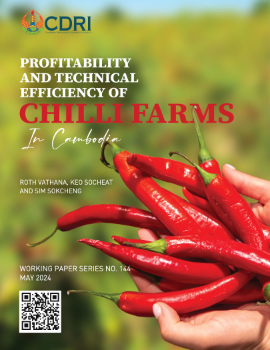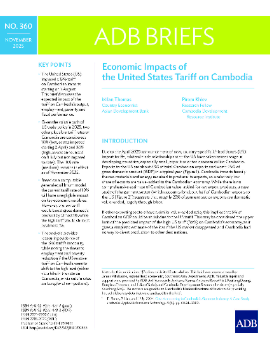
Profitability and Technical Efficiency of Chilli Farms in Cambodia
Keyword: Chilli farm profitability, technical efficiency analysis, stochastic frontier modeling, input and labor costs, agricultural productivity
Abstract/Summary
This study investigates the profitability and technical efficiency of chilli farming in Cambodia using data from 542 households and 719 plots across six provinces. Employing a revenue-cost framework and stochastic frontier analysis, the research evaluates yields, input costs, and production efficiency. Bird’s eye and lady’s finger chillies are the most commonly cultivated varieties, with bird’s eye chilli offering the highest profits due to its superior market price. On average, chilli farmers earn accounting profits of KHR18.1 million per hectare, representing 50% of total revenue, though economic profits are negative when family labour is included. Technical efficiency is low overall, with 71 percent of plots scoring below 60 percent. Key determinants of efficiency include land size, household size, geographical location, and pest prevalence. Larger plots tend to be more efficient, though diminishing returns are observed beyond 0.9 hectares. Labour-intensive practices and seasonal challenges, especially during the wet season, further constrain productivity. Policy recommendations include expanding cultivated land, improving input use through extension services, adopting cost-saving technologies, and enhancing wet-season production. The findings offer insights for improving chilli farm performance and guiding agricultural policy to support smallholder farmers and boost chilli sector competitiveness.



